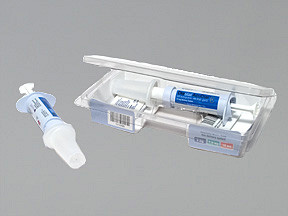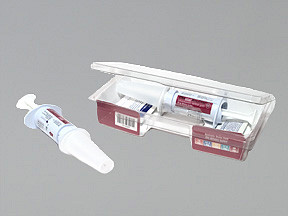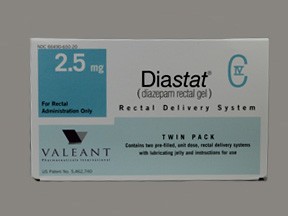DIAZEPAM - RECTAL
PHONETIC PRONUNCIATION: (dye-AZ-e-pam)
COMMON BRAND NAME(S): Diastat
GENERIC NAME(S): diazepam
Uses
USES: This medication is used to treat episodes of increased seizures (such as cluster or breakthrough seizures) in people who are already taking medications to control their seizures. This product is only recommended for short-term treatment of seizure attacks. It is not for ongoing daily use to prevent seizures. Uncontrolled seizures can turn into serious (possibly fatal) seizures that do not stop (status epilepticus). This medication is not recommended for children younger than 6 months of age because of the risk of serious side effects. Diazepam works by calming the brain and nerves. It belongs to a class of drugs known as benzodiazepines.
How to use DIAZEPAM - RECTAL
HOW TO USE: Read the Patient/Caregiver Information Leaflet provided by your pharmacist before you start using this product and each time you get a refill. If you have any questions, ask your doctor or pharmacist. This drug is given rectally by a caregiver trained to recognize the difference between your cluster and ordinary seizures. You and your caregiver must be comfortable with following all instructions from your doctor, pharmacist, and the product package. Be sure you understand when this medication should be used, how to use it, and how to check for side effects/seizure control. Before using, check the syringe for the correct dose. Your pharmacist should set the correct dose and lock the syringe in the "ready" position before giving you the product. Before leaving the pharmacy, look at each syringe. The dose should be in the display window on the side. You should see a green band with the word "ready" at the bottom of the syringe barrel. Look to make sure you have the correct syringe tip (for example, a smaller tip for a child) and that there are no cracks around the syringe tip. Return the product to the pharmacist if there is a problem or if you have any questions. Cracks can cause the medication to leak out and not provide the correct amount of medication. If you see a crack, use a different syringe. Cracks can appear over time, so keep checking your syringes to make sure you have good ones ready to use. The dosage is based on age, weight, medical condition, and response to treatment. In some cases, a second dose may be prescribed and given 4 to 12 hours after the first dose. Usually, this medication should not be used to treat more than 5 episodes per month and no more than one episode every 5 days. Do not stop taking your regular seizure control medications when you are given this drug. This medication should not be used regularly. It may cause withdrawal reactions, especially if it has been used regularly for a long time (more than a few weeks) or in high doses. In such cases, withdrawal symptoms (such as increased seizures) may occur if you suddenly stop using this medication. To help prevent withdrawal, your doctor may lower your dose slowly. Tell your doctor or pharmacist right away if you have withdrawal. Though it helps many people, this medication may sometimes cause addiction. This risk may be higher if you have a substance use disorder (such as overuse of or addiction to drugs/alcohol). Take this medication exactly as prescribed to lower the risk of addiction. Ask your doctor or pharmacist for more details. Get emergency help right away if seizures continue after using this product (for example, no change 15 minutes after the dose is given), or if there is a change in the person's breathing, coloring, behavior, or condition that alarms you.
Side Effects
Precautions
Interactions
Overdose
Images
Reviews
Warning
WARNING: Using diazepam with opioid medications (such as codeine, hydrocodone) may increase your risk of very serious side effects, including death. Get medical help right away if any of these very serious side effects occur: slow/shallow breathing, unusual lightheadedness, severe drowsiness/dizziness, difficulty waking up.
Disclaimer
IMPORTANT: HOW TO USE THIS INFORMATION: This is a summary and does NOT have all possible information about this product. This information does not assure that this product is safe, effective, or appropriate for you. This information is not individual medical advice and does not substitute for the advice of your health care professional. Always ask your health care professional for complete information about this product and your specific health needs.




No Reviews Yet